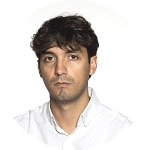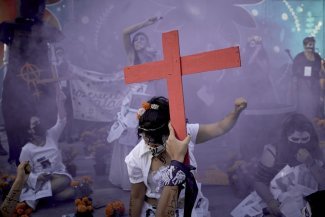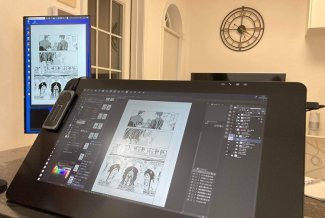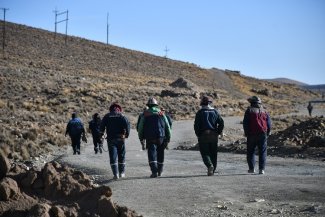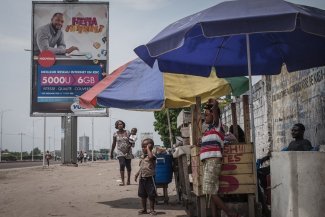In 2002, Eduardo Madina was the victim of an attack by the terrorist group ETA. A bomb hidden underneath his car resulted in long-term physical damage including the amputation of his left leg. Since then, the former deputy of the Spanish Socialist Worker’s Party (PSOE) has been one of the most outspoken voices for reconciliation. His commitment to truth as a path to peace now resonates more strongly than ever in an increasingly polarised world where concepts such as memory and forgiveness divide societies.
“I have always defended the need for coexistence, I believe in the reintegration of those who committed the crimes,” Madina tells Equal Times almost two decades after the attack, which is now only a marginal political issue. His position, he explains, is personal: “Everyone has the right to express themselves freely. One thing that has always been true of victims is that we are a diverse group. Trying to homogenise our opinions would be a serious mistake.”
Two years after the dissolution of the ETA, the spectre of violence remains present in the Basque Country, the region of northern Spain where the group was created to fight for independence during the Franco dictatorship. While the sound of gunfire is no longer heard, the tense calm and silence between members of the community can be sometimes be deafening, particularly in the towns that saw the most suffering.
“Basque society is still divided. Terrorism is now history but its consequences remain with us,” says Basque journalist Luis R. Aizpeolea, who wrote Los Entresijos del Final de ETA and is co-author of the book and subsequent documentary El Final de ETA. According to him, the Basque Country has yet to agree on what happened. “There is no normalised coexistence or integration because there has been no recognition of the damage done,” he says.
“The legacy of violence will endure over time. Too many years went by in which a narrative justifying the use of weapons prevailed and was passed on from generation to generation,” says Madina.
“The question that remains unresolved is what to do about remembering and forgetting. How much do we have to remember in order to move beyond what happened and make sure that it doesn’t happen again?”
His words could just as easily apply to Spain – where ETA claimed over 7,000 victims (including 853 deaths) from the time it began killing in 1968 to the time it laid down its arms in 2011 – as they could to numerous other countries which have suffered from internal conflicts or been hit by terrorism.
“We’ve heard many victims say that they don’t want justice, they just want to know the truth. This is the only way for them to be at peace again after so many years of questions that no one knew how to answer,” says Dora Lancheros, who coordinates the psychosocial approach at the Colombian Truth Commission.
The independent body was created as part of the historic peace agreement reached at the end of 2016 with the mission of clarifying what happened in a war that claimed 262,197 lives, the majority of them civilians according data from the National Centre for Historical Memory. “We have to break the silence that has prevailed in our country for far too long,” says Lancheros.
No mourning with fear and impunity
The armed conflict in Colombia dragged on for more than half a century and affected a large part of society. It’s hard to find someone in the country that has not suffered as a result. And it’s not just the dead: anti-personnel mines, threats of extortion and kidnapping, and crossfire between illegal armed groups have forced more than seven million people from their homes, a record number across the globe.
After interviewing nearly 10,000 people who have been involved in the armed conflict (and those who have suffered from its consequences, from relatives of the disappeared to women who have been the victims of sexual violence, those who have been injured by explosives or kidnapped, to abused children), Lancheros’ team realised that they were encountering the same patterns of trauma and stigma that had repeated themselves and become entrenched over the years.
The first is the result of the unending dynamics of violence: four years after the peace agreement was signed, human rights defenders in the country are still massacred and the state has been unable to impose its authority in many territories. The number of ex-guerrillas killed has also grown steadily since they laid down their arms.
“Human rights violations continue to be systematically committed. The sad thing is that you end up getting used to this reality, violence ends up becoming normalised. It’s impossible to complete the process of mourning, as the victims are unable to leave their pain behind. It’s still there, they see it every day on television,” says Lancheros.
Another factor is fear, both as “an instrument used by armed actors to paralyse people and impose silence in the face of their actions, as well as a defence mechanism that keeps people from taking to the streets in protest and causes them to look the other way.”
This idea is captured very well in the recent HBO hit series Patria, inspired by Basque writer Fernando Aramburu’s bestseller of the same name, which takes place in the Basque Country over the last few decades. “There’s a lot of truth in the atmospheres, in the silences, in the way fear is managed, in the community that looks the other way, all of that existed,” says Eduardo Madina.
The impression of impunity is the third feature that Lancheros has seen repeated in the countless people she has interviewed about the conflict in Colombia. “This feeling that there will never be justice goes hand in hand with despair and frustration and leads civil society to lose credibility in the justice system.”
The line between forgiving and forgetting
Some feelings are difficult to understand if you haven’t experienced something as traumatic as a war or a terrorist attack. Perhaps the cruellest is the guilt that takes hold of the victims themselves. “This is the message that violence leaves behind. According to this narrative, the armed actor punishes you because you did something wrong,” explains Lancheros.
The Truth Commission is in contact with other similar bodies around the world, from Latin America to Africa, whose work consists of gathering testimonies about what happened to ensure that it does not happen again. The spectre of guilt, especially when victims have been forbidden to speak out for years, hovers over many other societies, from Chile to Rwanda, to South Africa, El Salvador and Northern Ireland.
The terrifying power of illegal armed groups infects every aspect of a community. “They replace social norms by imposing their own with weapons. Failure to obey this order implies reprisals, which is when ambiguous and contradictory feelings arise among civilians.”
According to Colombian journalist Juanita León of La Silla Vacía, the former guerrillas of FARC have completed some steps on the path to reconciliation following the peace agreement, including ending their denial. Previously, they had claimed that “they did not murder but executed, that they did not kidnap but held prisoners, that they did not recruit children but offered them refuge.”
With their testimonies before the Special Jurisdiction for Peace (the special tribunal created to judge war crimes, which prioritises reparations through truth over prison sentences), former FARC commanders have also begun to stop justifying their illegal acts: kidnapping as a way to “finance the revolution” or selective killing of “enemies of the people.”
Apologising may be the most important step
“In the name of the FARC I sincerely offer our apologies to all the victims of the conflict for all the pain that we have caused in this war,” said Rodrigo Londoño, the former supreme leader of FARC (and current leader of the new political party that has succeeded it), when signing the peace agreement in 2016.
“There is nothing, nobody that can ever bring back my son,” says Martha Luz Amorocho, who lost one of her sons (the other spent some time in a coma) in a FARC attack in Bogotá in 2003. “But we must understand that reparations will be symbolic. When I heard the FARC ask for forgiveness I had mixed feelings. It brought back a lot of bad memories. But their words show good intentions, so I choose to accept their apology,” she says.
The line between remaining silent and apologising sometimes seems impossible to cross. Some former FARC guerrillas took up arms again a few months after the peace agreement, joining the dissidents who by mid-2020 numbered 4,600 according to intelligence reports.
In the Basque Country, practically all ETA prisoners still in jail (nearly 200) agree with ending violence but far fewer have apologised to their victims face to face.
Not even Bildu (the party of the pro-independence left, some of whose members were once associated with the terrorist group) is categorical in its rejection of the damage caused by ETA in Basque society.
“They continue to maintain the position that there were two sides, that there was a conflict, that everyone suffered. But that is not the case: the victims died unjustly while they chose their path and knew they could go to prison,” argues journalist Luis R. Aizpeolea.
As Lancheros argues, it is unfair to compare the suffering of the victims with that of the victimisers. “It is true that the structural conditions of a country like Colombia apply to both, and can lead a person to be recruited or to join the ranks of an armed group. There are similar feelings, such as frustration, sadness or anger, but the origin is different because they act from different places.”
Hope
In one year, at the end of 2021, the Truth Commission will present its final report on the armed conflict in Colombia. This will be a crucial moment, not only because of the conclusions, but also because of the response in society. Lancheros regrets the polarisation that, as in so many other societies across the world, has been taking place in her country. “I hope that our work will help to shed some light on what happened to us in order to overcome that division,” she says.
“When you try to find out what happened to your relatives who disappeared there are always those who say you are reopening old wounds. But no one ever closed those wounds. And if you don’t heal the wounds, they will just keep festering,” says Spanish singer Rozalén, who has expressed her interest in historical memory for years in songs like Justo, which recounts the story of her great-uncle who fought with the Republican side in the Spanish Civil War and whose remains she found a few years ago in a mass grave.
She mentions the Museum of Memory and Human Rights in Chile as an example to follow because it invites us not to repeat history. “I wish there was a place like this in Spain and in other places that have suffered from violence.” She talks about the stages of grief and the importance of knowing the facts, whatever side a person was on.
“It’s very painful to be told ‘forget and don’t reopen old wounds’ when it comes to knowing what happened to a loved one and it still hurts. In Spain, everyone who lived through the Civil War [between 1936 and 1939] is dying, so what now? Who is going to tell us what happened? We have to keep that history alive,” she argues.
Lancheros agrees. She believes that truth is the most powerful tool for moving beyond a conflict. “It’s crucial for the victims to be able to say ‘that silence that accompanied me for so many years is no longer silence but truth, I didn’t imagine it and it wasn’t my fault, it really happened.’ By making their pain public they leave behind guilt and break through this personalisation of violence. This is the hope that encourages us to continue working.”


